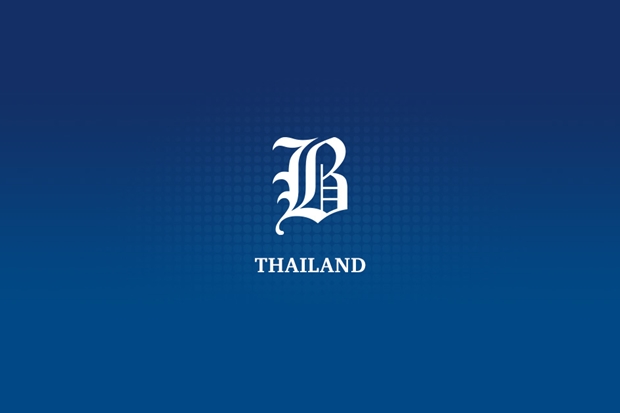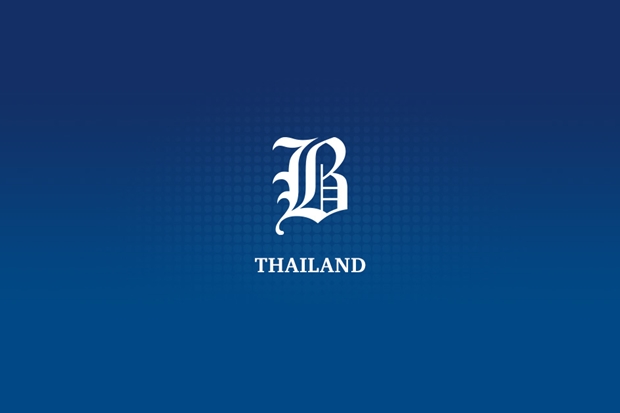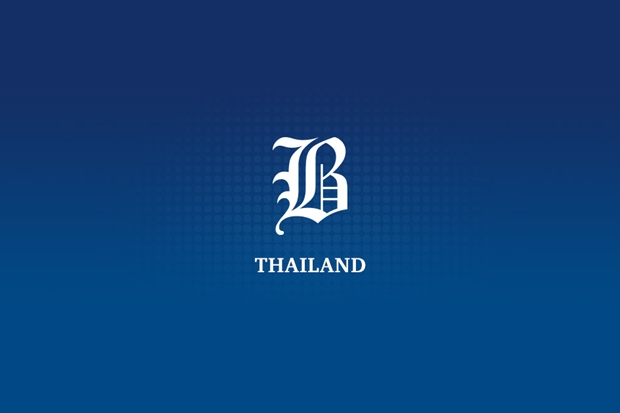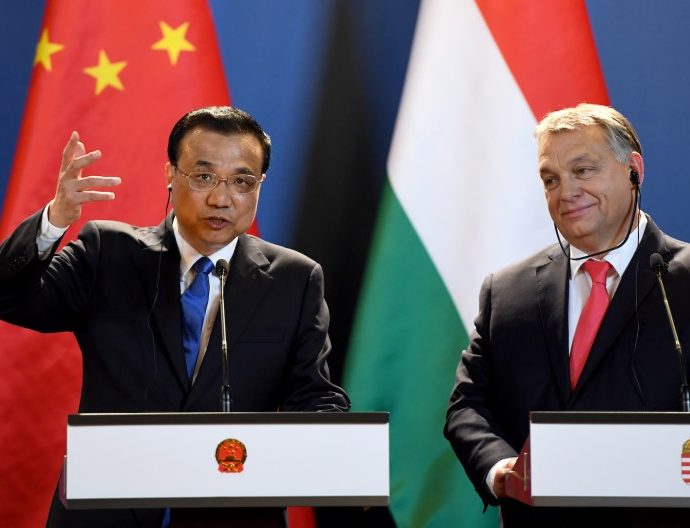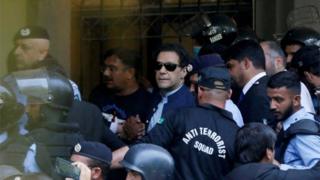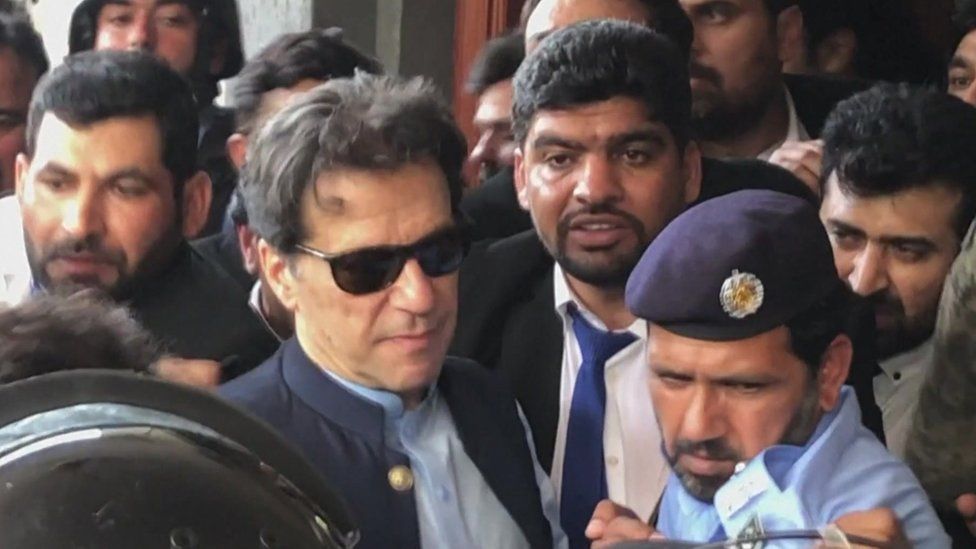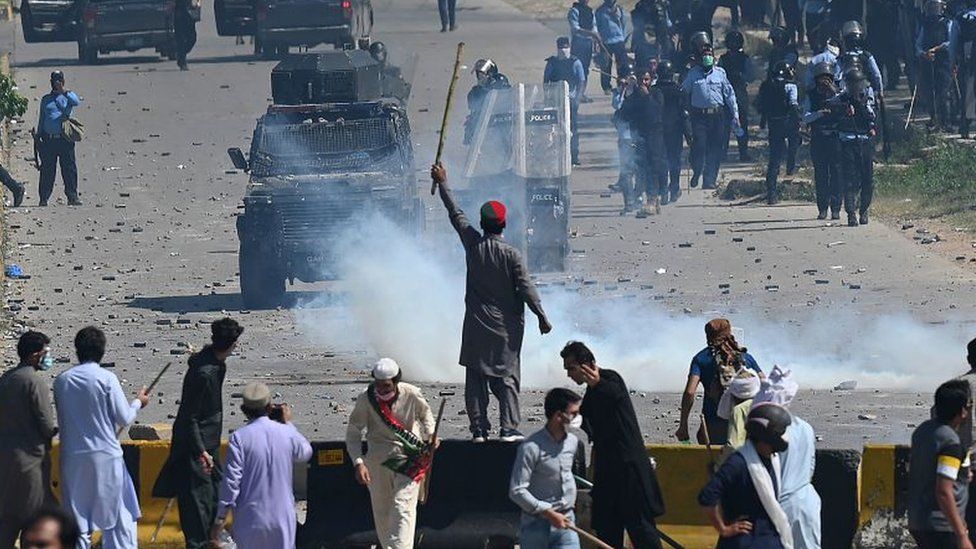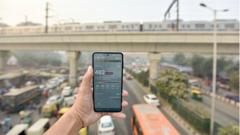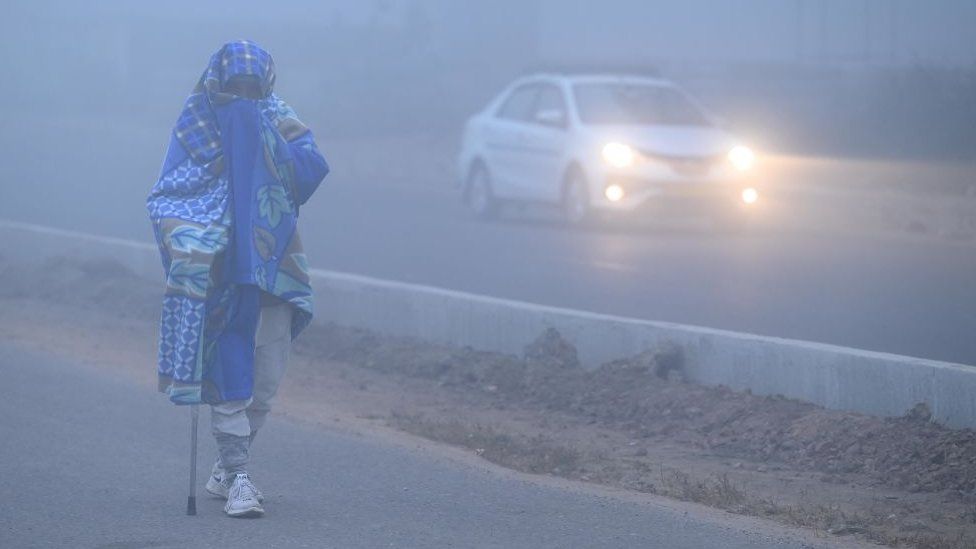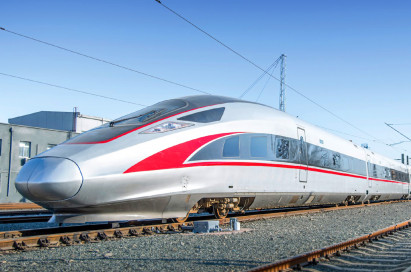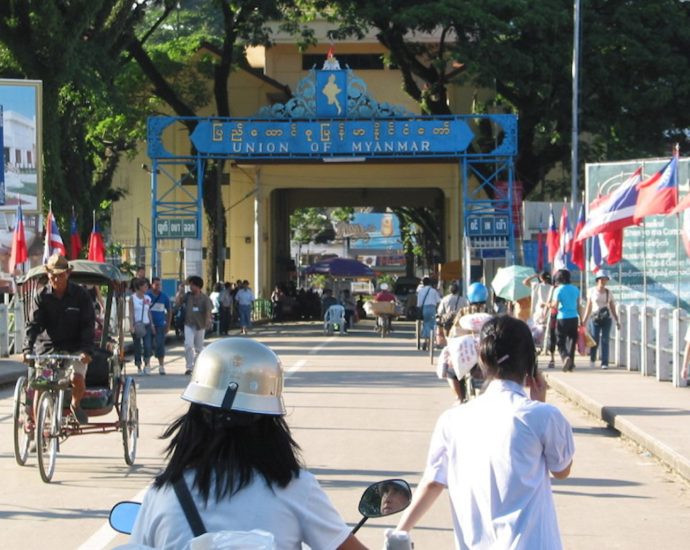Asean to hold first joint drills
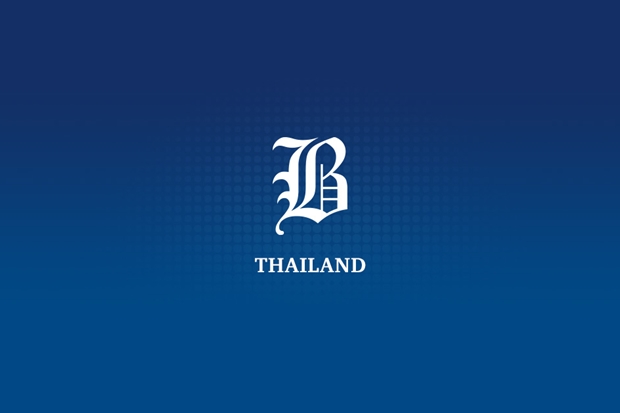
JAKARTA: The Southeast Asian bloc will hold its first-ever joint military exercise in the South China Sea, its chair Indonesia said on Thursday, the latest multilateral security drills at a time of rising tension and uncertainty in the region.
The decision was taken at a meeting of military commanders of the 10-member Association of Southeast Asian Nations (Asean) in Indonesia, which will host the exercise in the North Natuna Sea, the southernmost waters of the South China Sea.
Indonesia’s military chief, Admiral Yudo Margono, told state-run news agency Antara the exercise would be in September and would not include any combat operations training. The purpose, Adm Margono said, was strengthening “Asean centrality”.
Asean’s unity has for years been tested by China-US rivalry in the South China Sea. Reuters
‘Stateless’ kids to stay in school

The Ministry of Education on Thursday guaranteed that all ethnic minority children at Thairath Wittaya 6 School in Ang Thong province are eligible to attend school despite their stateless status.
The assurance followed a ministry probe into claims that the children were relocated from a border town near Myanmar in the north to the Thairath Wittaya 6 School in Pa Mok district against their will.
Locals had filed complaints with the authorities about a large group of ethnic minority children being enrolled in the Thairath Wittaya 6 School, which only has two teachers, one director and one administrator, said provincial governor Rangsan Tancharoen.
However, Education Minister Treenuch Thienthong said on Thursday that she had received reports from the Office of the Basic Education Commission that all 124 students had been relocated from the North to Ang Thong to enrol in Thairath Wittaya 6 School.
According to the Ang Thong Primary Educational Service Area Office, a screening found that seven of the children held Thai citizenship, while the rest did not have proof of civil registration, she said.
The office has offered to help the children, she said. They will now reside in a school building and the Wat Sa Kaeo Orphan Aid Centre and continue their lessons until the investigation is complete, she said. “The Education Ministry guarantees that all children in Thailand are eligible to enrol in schools despite their race or nationality, a universal practice [under] to the Convention on the Rights of the Child.”
To verify whether the children had entered Thailand legally, related agencies were assigned to investigate, she said. Reports showed that the smuggling of ethnic children involved people in various sectors, she said.
Authorities are probing possible human trafficking as all of the children were taken from Akha village on Doi Mae Salong in Chiang Rai province, a hill separating Thailand and Myanmar.
Pol Col Sakchai Kraiweeradechachai, superintendent at Pa Mok station in Ang Thong, told the press that the children could not speak Thai.
Calls for reforms to retain Thai nurses

Around 10,000 new nurses graduate annually, yet up to 7,000 quit Thai state-run hospitals each year due to excessive workloads and inadequate pay for overtime, according to the nurses’ union and Nurses Connect.
The significant rate of nurse resignations serves as a basis for urging the new government to explore more effective strategies to retain a maximum number of nurses within the country’s state-run healthcare system.
Suwimol Namkanisorn, a representative of the nurse’s union and Nurses Connect, said the rate of new nurses resigning within their first year of work is now as high as 48.9%.
“There is no need to increase the number of newly trained nurses, but having effective new measures to retain nurses in the state-run healthcare system is crucial,” she said.
On average, these nurses work 80 hours per week, even though they are supposed to work at most 60 hours a week — as stated in a regulation by the Thailand Nursing and Midwifery Council, she said.
The total number of working hours of a nurse used to be around 48 per week, but as more and more nurses resigned, the workload became more excessive, she said.
“It would help if the new public health minister can gradually lower the average number of working hours of nurses at hospitals under the Ministry of Public Health’s jurisdiction from 80 to around 60 per week,” she said.
As for overtime work payment, she said while nurses working at hospitals under the Bangkok Metropolitan Administration (BMA) now receive 1,200 baht per eight-hour shift, those working for hospitals under the ministry are paid only between 650 and 800 baht per shift, she said.
Ms Suwimol added that overtime pay should be at the same (higher) rate across the board.
Sunway, UOB Malaysia partner to advance net zero goal by 2050
Share research on developments and most recent sustainability practices
Builds on two-decade partnership, embark on path to low carbon economy
Sunway Group and UOB Malaysia have inked a partnership which will see the two companies working together towards their shared mission to achieve net zero carbon emissions by 2050.
The MoU was signed…Continue Reading
The G7 anti-China façade shows cracks in Europe
BUDAPEST – The Group of Seven’s apparent united front against China at last month’s Tokyo summit has given way to a new round of diplomacy with Beijing.
Chinese analysts draw a bright line between, on the one hand, the United States and Japan, which are committed to containing China, and, on the other hand, the leading European countries, which are open to economic incentives.
Chinese’s number two official Li Qiang will visit Berlin and Paris later this month, attending a June 22 conference on support for poor countries (grandly titled “A new world financial pact”). The conference is the project of French Prime Minister Macron; its significance lies in the fact China as of March exported more to the Global South than to the whole of the developed world.
In the short term, countries like France with longstanding interests in the Global South must find a modus vivendi with China. In the medium term, China’s enormous economic commitment to Africa – an estimated $155 billion of investment during the last twenty years – represents Europe’s best hope of forestalling an uncontrollable wave of immigration from Africa.
En route to Paris, Premier Li will meet German Chancellor Gerhard Scholz in Berlin. The head of Scholz’s Social-Democratic Party, Lars Klingbeil, met Li Qiang in Beijing this week. Li declared that “Beijing stands ready to propel its strategic partnership with Berlin to new heights,” adding, “China attaches great importance to its relations and cooperation with Germany, and it is important for the two major influential countries to stay true to their original aspiration of cooperation, and strengthen dialogue and coordination to bring more stability and certainty into the world.”

Klingbeil also met with Wang Huning, perhaps China’s most visible political strategist, and the author of the tract “America Against America,” a critique of American cultural and economic decline.
One of the most important currents in the SPD, the Seeheimer Circle, last month issued a white paper calling for a “multidimensional policy” towards China, by way of riposte to Washington’s efforts to isolate China. “An abrupt end to trade relations with China would be an economic disaster,” the Seeheimer paper warns. “We are responsible for the security of domestic employment. In that regard, a coherent China strategy should not be an anti-China strategy that pursues the objection of decoupling Germany from China.”
Party-to-party diplomacy may be more important for German-Chinese relations than government-to-government discussions. During the past year, the most visibly pro-American German party, the Greens, have fallen from 22% to just 14% in the polls, while the hard-right, anti-NATO Alternative für Deutschland has jumped from 14% to 19%. The German coalition has effectively broken down, and the parties are pursuing their policy goals separately.
Hungary provides an important directional indicator for European policy. Hungary’s Prime Minister Viktor Orbán appears to have moved far afield from the European mainstream. He declared May 23 that Russia could not be beaten military in Ukraine, and his foreign minister announced that Budapest would veto additional EU aide to Kyiv. Hungary’s relations with China are strong, and developing rapidly.
Orbán’s government has sought more rather than less Chinese high-tech investment, including the East-West intermodal freight hub, the first rail transport facility using 5G broadband and artificial intelligence for container transshipments, an important project for China’s Huawei. That contrasts with the rumbling (reported on June 7 in the Financial Times) of an EU-wide ban on Huawei infrastructure.

Orbán is less isolated than he appears. It is unlikely that he would take outlier positions unless he had the tacit support of other European political forces. The Hungarian leader is likely to set the pace for the next round of EU-China discussions.
China sees opportunity in Europe. Countries in the G7 “have different degrees of intensity in dealing with China, and China can adopt a strategy of dividing them,” wrote the influential commentator Yang Feng in a May 23 online analysis that likely reflects the thinking of the Chinese government.
“The difference in the level” of opposition to China, Yang wrote, “means that China has different options for responding to the positions of the seven countries. What Japan has adopted is industrial substitution, which is direct competition [with China]. But in the case of France, Germany and Italy, China can offer a policy of attraction, opening up its domestic economy and trade, as well as opening up investment. Where the UK is concerned, China will cooperate if wants to cooperate and pull back if it does not want to cooperate. It is up to the UK to choose.”
The Chinese commentator noted, “Regardless of how loudly the Group of Seven is shouting, the only countries that China really has to deal with are the United States and Japan.” He added: “After Biden took office, in terms of economic and trade policies, only Japan has cooperated with the US policy and imposed blockades and sanctions on China. Most of the other countries have stayed at the level of talk.”
Yang Feng added that China will “continue to work toward de-dollarization in the non-American world. Even US allies such as the European Union countries are also interested in getting rid of their dependence on the US dollar.”
Why Imran Khan has disappeared from Pakistan’s media
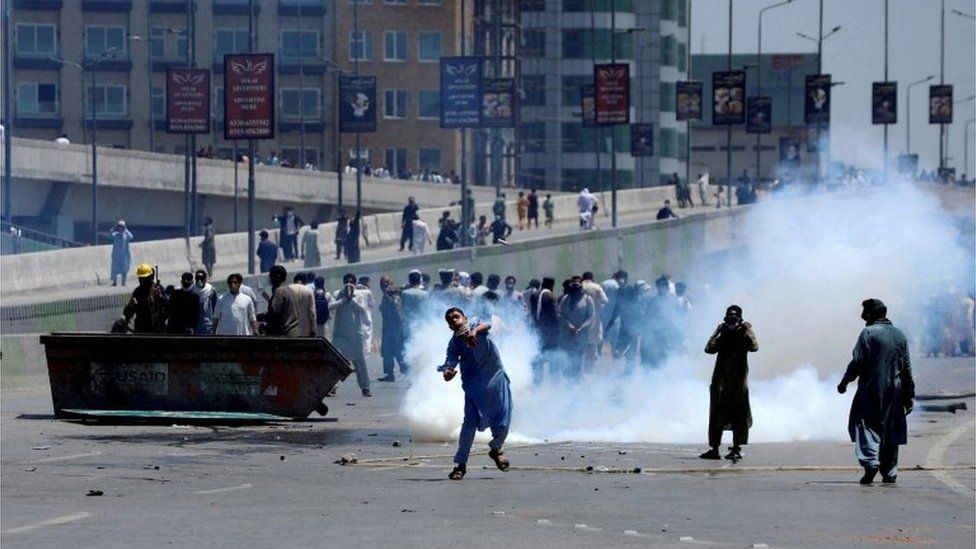 Reuters
ReutersIt was a surreal moment. On Tuesday night during his live TV show, Pakistani anchor Kashif Abbasi was talking about a legal petition filed by a lawyer against former prime minister Imran Khan.
Mr Abbasi says his name, then stops himself: “He filed an application under article six against Imran Khan… I apologise, against the chairman of Pakistan Tehreek-e Insaf.”
We tried to speak to Mr Abbasi, but he did not get back to us.
Over the last week, you will have struggled to hear Imran Khan’s name or see his picture on Pakistan’s media.
His arrest a month ago on corruption charges is the backdrop to this crackdown. When Mr Khan was taken from a court complex in Islamabad on 9 May, protests were sparked around the country. Some protested peacefully, but there was also violence.
Military buildings including the home of the most senior military commander in Lahore were attacked. The police arrested thousands of Khan supporters and the military have said they intend to try the alleged perpetrators of the attacks in military courts, something human rights groups including Amnesty International have said is against international law.
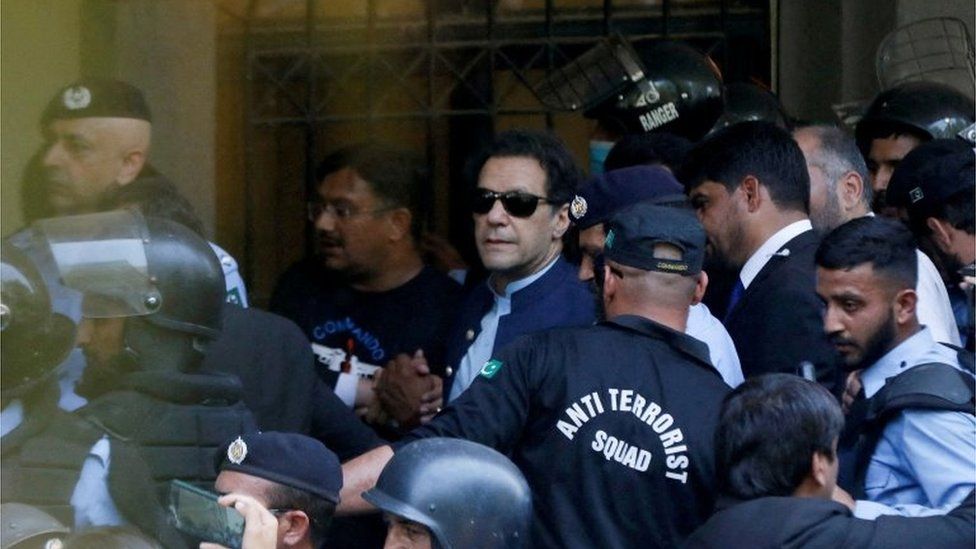
On 31 May, Pakistan’s media regulator Pemra sent out a directive to Pakistan’s news channels. After mentioning the events of 9 May, the directive reminds media channels that they must refrain from providing airtime to individuals who propagate hate speech.
There is no mention of Imran Khan’s name in the directive, but we have spoken to several individuals at different TV stations who told us that the message had been conveyed in clear terms to their channels.
Imran Khan’s name should not be mentioned, his picture not shown, his voice not heard, even a mention on the channels’ ticker tapes was not allowed, they told us. If there was any need to mention him, Mr Khan should only be referred to by his title, the chairman of his party, the PTI.
Two sources told the BBC that they had spoken directly to the owners of the TV channels they work for. They say the owners had been called into a meeting with senior officials from the military and intelligence services who told the channels in clear terms what was expected.
“They were told you will not run any news that bears his name and if you do you will be responsible,” says one source who works in Pakistan TV. All contributors from the media spoke to us on condition of anonymity.
The BBC has approached the army for a response, but has not yet heard back from them. Pemra’s director general confirmed that they had issued the directive but said that no instruction was given to news channels to stop mentioning Imran Khan.
It’s not the first time that a politician has been subject to a ban; during Imran Khan’s time in power, his political opponent Nawaz Sharif’s speeches were banned.
“Censorship has always been there in some way or another in Pakistan,” one journalist told me. “I used to get calls from the ISPR [the military’s press wing] saying there would be consequences about talking critically about Imran Khan.
“Back then we struggled to find opposition leaders to speak to because they were in jail. Now we struggle to have someone on from the PTI. The major difference between Khan’s tenure and now is that now they have this justification of the 9 May violence.”
Those in the media spoke to us about how this policy could affect their channels.
“The top channels here said: ‘How are you going to manage this?’ The fear is that the channels will lose credibility sooner rather than later if they are not showing any news about the PTI and pushing government press conferences.
“A very large number of people also watch TV because they want to get news about Imran Khan. The day he was arrested, the viewership was incredibly high.”
After being arrested then released, many of the PTI’s senior leadership announced they were leaving the party. The limits on the media are just the latest attempt to reduce Imran Khan’s influence before an election due later this year.
There are some who disagree with the way that this has been portrayed.
“It’s been twisted for political gains, saying that his name is banned,” says Faisal Vawda, former PTI leader and previously a close Khan aide. He left the party in late 2022. “It [the Pemra directive] doesn’t say officially anywhere in terms of law that this is about him.
“Anyone involved in terrorism, any kind of violence will not be allowed on media, that’s the basic law of the country.
This video can not be played
To play this video you need to enable JavaScript in your browser.
“Technically he [Khan] fits into that scenario because he was the one who was commanding it. All the witnesses say that they got the instructions from him.”
That’s something that Mr Khan disputes, saying the violence was encouraged by the intelligence services, although he has not provided proof of this.
Those involved in the media that we spoke to have found it frustrating.
“It is farcical,” says one regular contributor to TV news channels. He takes part in discussions about 9 May, but is not allowed to name Imran Khan.
“When you arrive, they ask you not to talk about the establishment’s interference in politics as they worry this will get them into trouble. Even if you mention his name, because of the time delay they will just beep you out. It’s just an environment of fear, it’s like we are living under martial law.”
The establishment is the short-hand term for Pakistan’s powerful military and intelligence agencies that many analysts believe are behind the recent crackdown.
Despite there being precedent for limits on Pakistan’s media – it is currently ranked 150 out of 180 on press freedom by the Reporters without Borders index – there are concerns that recent weeks have made a lasting impact on free speech.
“I think [that since 9 May] we’ve lost the space that we had since Musharraf era. We lost that freedom of speech,” one journalist told me. “In the past year, the way military was criticised on TV channels and papers – I’ve never seen that.
“Now I think it will take us years, if not a decade, to recapture that space.”
“This is an unprecedented level,” says another. “It’s the self-censorship that is actually the worst. It makes me second-guess myself, my team second-guess themselves. They come to me scared they will get something wrong, some header, inviting a particular guest because they might mention Imran Khan or be sympathetic towards what is happening to the party.
“You never know who can be picked up. We are really under pressure.”
Related Topics
AI, facial recognition tech front and centre at China security expo
BEIJING: AI tech that spots “undesirable” behaviour and long-distance facial recognition software was on show on Thursday (Jun 8) at a Beijing expo attended by hundreds of companies – many blacklisted by the United States for their alleged role in repression in China and abroad. The three-day Security China eventContinue Reading
Delhi: The city where it is dangerous to breathe
 Getty Images
Getty ImagesImages of the Statue of Liberty in New York – obscured by a thick haze of smoke caused by wildfires in neighbouring Canada – have shocked the United States.
But in the Indian capital Delhi, the iconic India Gate hidden behind a thick haze is a reality every winter.
Smoke from farmers burning crop stubble in neighbouring states mixes with pollutants released by fire crackers that are set off by millions of revellers during the Hindu festival of Diwali.
This produces a thick blanket of smog that covers the city.
The air gets dangerously bad, with pollution reaching levels nearly five times what the World Health Organization considers safe. It is the equivalent of smoking packs of cigarettes a day.
You can feel the pollution on your skin, see it on the horizon – as the skyline turns a sickly grey-yellow – and taste it in your throat.
Residents are implored to stay inside, keep the windows and doors closed and wear masks when stepping out.
It is like a scene from a dystopian novel or an apocalyptic film, except that it is real.
Delhi’ites – as the city’s residents are called – start complaining of stuffy noses, burning eyes and pounding heads.
Hospitals begin to fill up with wheezing people with breathing difficulties.
Those who can afford it, rush to buy expensive air purifiers. But these are effective only in closed rooms.
The city and its suburbs, that make up India’s national capital region, are home to more than 32 million people, the majority of whom have to get out and about.
The poor who reside in the city’s slums and shanties, alongside millions of daily wage workers, roadside vendors and traffic policemen who work outdoors, are condemned to breathe the foul air.
Roadside fires that are started to keep warm as temperatures dip and the nights get colder, also contribute to an increase in the pollution levels.
And as the city routinely tops the list of “world’s most polluted capitals”, Delhi’ites obsessively check apps that provide a reading of the air quality index.
The levels of PM2.5, the lung-damaging tiny particles in the air that can exacerbate a host of health issues like cancer and cardiac problems, and PM10 – slightly larger particles, but still pretty damaging – are of particular interest.
Levels of PM2.5 below 50 are considered “good” and under 100 “satisfactory”.
It is summer now, and there have been occasional days of clear blue skies and bouts of unexpected rainfall.
But the PM2.5 levels in Delhi on Thursday are still hovering around 150 on Safar and other Indian government apps.
On some winter days, they rise to 400 or even breach 500 – the maximum the apps can measure.
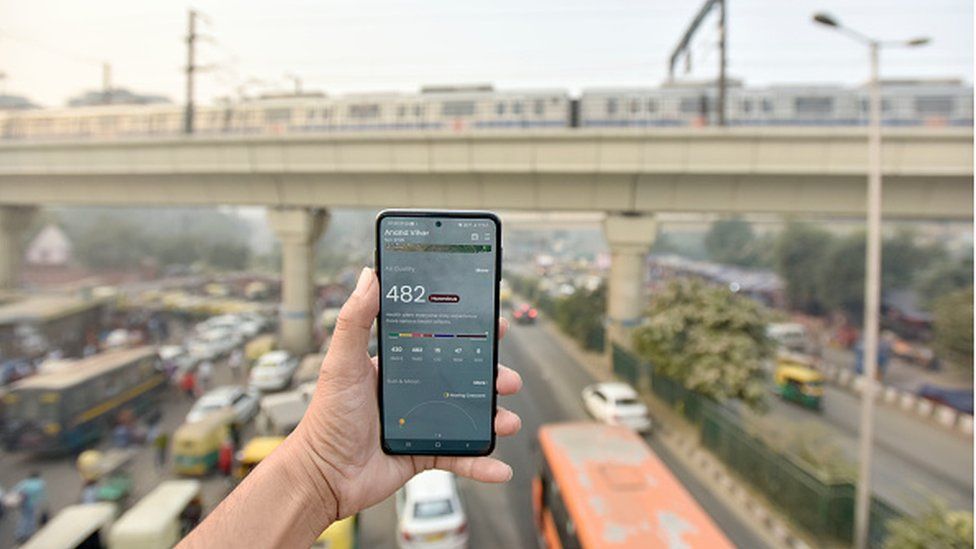
Experts say exposure to such high levels of pollution make people more prone to all kinds of infections – they increase the risk of heart attacks and can damage vital organs like the liver and brain.
A study done by US research group Energy Policy Institute at the University of Chicago (Epic), last year found that air pollution in Delhi can shorten lives by almost a decade.
When things get really unbearable, schools and colleges are shut, construction work is halted and trucks that run on diesel are banned from the city.
Other emergency measure include encouraging people to work from home and curbing the use of private cars.
But critics say these measures are like putting a bandage on a gunshot wound.
So, every year, as the air turns murky, judges of the Indian Supreme Court haul state and federal governments into court, asking them what they intend to do about the problem,
Experts say cleaning up the air requires drastic measures – but they are not a priority for the country’s leaders.
BBC News India is now on YouTube. Click here to subscribe and watch our documentaries, explainers and features.

Read more India stories from the BBC:

Phase 1 of high-speed rail ready âby 2026â
Bangkok-Korat line part of a system that will ultimately reach Kunming

The first phase of a high-speed railway that will eventually link the Chinese city of Kunming with Bangkok will be completed in 2026, government spokesman Anucha Burapachaisri said on Thursday.
The 251-kilometre first-phase line will have six stops from Bangkok to Nakhon Ratchasima: Bangsue Grand Station, Don Muang, Ayutthaya, Saraburi and Pak Chong.
The Fuxing Hao CR300AF train — capable of carrying at least 600 passengers — is expected to be used for the project, Mr Anucha said.
The project consists of 15 construction contracts: one for system construction and 14 for civil engineering work. Construction has been completed on just one contract, with 10 others under way and three others awaiting authorities’ signatures.
According to Mr Anucha, Chinese authorities have promised the Thai government to transfer knowledge related to high-speed railway construction, including materials, constructing rail lines on different kinds of terrain, station design, and bridge and tunnel construction.
“The railway will help to enhance the country’s economy and well-being,” he said.
The rail project has been beset by delays since it was first proposed to the government back in 2010.
One major sticking point was financing, with Thailand insisting that it would fund the project, as it did not want to repeat the experiences of other countries that had borrowed from China to fund megaprojects.
In Laos, Beijing paid 70% of the costs of the Vientiane-Boten high-speed rail line and much of the Lao government’s contribution came from loans from Chinese banks.
Escaping Myanmar scam gangs a challenge
Government says it has repatriated 63 of 140 Thais who sought help

CHAING RAI: More than 140 Thais have sought help after being duped by online scam gangs to work in Myanmar’s Shan state since last year, and about 60 have been rescued so far, according to the Consular Affairs Department
Ruj Thammongkol, the department’s director-general, provided the update at a meeting on Wednesday with representatives of other groups seeking solutions to speed up the repatriation of victims.
Participants included Paveena Hongsakul, president of the Paveena Foundation for Children and Women, and officials from the Thai embassy in Yangon, the Chiang Rai Chamber of Commerce and the Migrant Worker Assistance Centre in Chiang Rai.
Many Thais are lured by online advertisements on social media promising higher wages and attractive welfare packages, said Pol Col Sanya Niumpradit, Police Attache of the Royal Thai Embassy in Myanmar.
However, they later became victims of scammers, with their passports taken, he said, adding that many had contacted the embassy for help.
Pym Chaiyasan, first secretary of the embassy, said most of the victims came from Thailand’s northeastern and central regions, and none were Chiang Rai residents.
Amnat Phalapleewan, director of the Thai Nationals Overseas Interests Protection Division of the Consular Department, said most of them reported having been lured to work illegally in Myanmar.
“About 140 people asked us for help but we have been able to repatriate only 63 of them so far,” he said. “The problem is that the rescue process can take about two to three months.”
Establishing an investigation centre to punish those who file false complaints to the division could reduce the rescue process to a few weeks, he said.
An immigration office in Chiang Rai also reported that Thais who were lured by criminals did not cross the border using the Mae Sai immigration checkpoint. Instead, they used natural crossings, which made it hard for officers to track them, it said.
According to a report by The Border Consortium (TBC), 11 out of 18 Thais, aged 20–30 years old, were rescued from call centre gangs from November to January, leaving the rest yet to be rescued.
It said the victims viewed recruitment ads on Facebook, Line and TikTok about working in the Myanmar border town of Tachileik, promising free food and accommodation and high pay.
However, after crossing, they were sent to other cities in Shan state to work for call centre gangs, it said.
Some of them were forced to sign contracts written in the Chinese language, it said, noting that they were abused while some of the women were forced to sell sex.
A similar message came from the Paveena Foundation for Children and Women, which said some of the women were forced to use drugs and became prostitutes while others were held for ransom.

